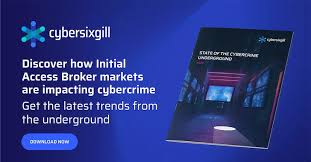Digital Loot: Recent Trends in the CC Underground

The internet’s hidden corners have long harbored marketplaces for illegal digital goods, particularly credit card data. Collectively referred to as the CC underground, these networks are where stolen financial information vclubshop is bought, sold, and exploited. In recent years, the CC underground has evolved significantly, reflecting broader trends in cybercrime, technology, and criminal enterprise. This blog explores the latest developments in this shadowy ecosystem, shedding light on how criminals operate and the implications for individuals, businesses, and law enforcement.
The Evolution of the CC Underground
The CC underground has existed for over two decades, beginning as informal exchanges on hacker forums and private chat rooms. Initially, transactions were small-scale, often limited to a handful of individuals trading stolen card information. Over time, these operations became more organized, giving rise to full-fledged marketplaces that resemble legitimate e-commerce platforms in functionality.
Today, the CC underground is a global ecosystem. Criminals operate across borders, often using encrypted communication channels and cryptocurrencies to maintain anonymity. This evolution reflects a shift from opportunistic theft to industrial-scale cybercrime, where stolen data is treated as a commodity and traded with the same sophistication as legal goods.
What Defines Digital Loot
“Digital loot” refers to any stolen or illicitly obtained data with monetary value, but within the CC underground, it primarily focuses on financial information. This includes:
- Credit card numbers along with associated details such as CVV codes, expiration dates, and cardholder names.
- Bank account credentials for direct online transfers or automated fraud schemes.
- Login credentials for e-wallets, payment platforms, and digital banking services.
- Personal identification information that can be used for identity theft, fraud, or account takeover.
This digital loot is often packaged and marketed with meticulous detail, listing attributes such as card type, issuing bank, geographic location, and available balance. The sophistication of these offerings highlights the industrial nature of modern cybercrime.
Recent Trends in the CC Underground
Recent years have seen notable shifts in the CC underground, reflecting changes in both criminal behavior and cybersecurity landscapes.
1. Professionalization of Marketplaces
Much like legitimate businesses, CC marketplaces now offer user-friendly interfaces, customer support, and transaction guarantees. Some even provide tutorials or guidelines for buyers, effectively onboarding vclubshop login newcomers into the criminal ecosystem. This professionalization increases the efficiency of the underground economy and attracts a broader user base, from small-time fraudsters to organized cybercrime syndicates.
2. Increased Use of Cryptocurrency
The adoption of cryptocurrencies such as Bitcoin, Monero, and Ethereum has revolutionized transactions within the CC underground. Cryptocurrencies provide a degree of anonymity and reduce the risk of traditional financial tracing. Recent trends also show the emergence of mixers and tumblers—tools that obfuscate cryptocurrency transactions, further complicating law enforcement efforts.
3. Expansion Beyond Credit Cards
While credit cards remain a primary commodity, the CC underground has diversified. Criminals are increasingly trading:
- Digital wallets and online payment accounts
- Gift card balances and prepaid debit cards
- Credentials for subscription services or loyalty programs
This expansion reflects the adaptability of cybercriminals and the growing value of digital assets in modern economies.
4. Targeted Attacks and Data Breaches
Large-scale data breaches have become a cornerstone of the CC underground. Criminals exploit vulnerabilities in corporate systems, phishing schemes, and malware campaigns to obtain vast quantities of cardholder information. This shift toward targeted, high-volume theft highlights the increasing technical sophistication of cybercriminal operations.
5. Forum and Marketplace Fragmentation
The CC underground has seen fragmentation due to law enforcement crackdowns and internal conflicts among criminal groups. While some large marketplaces have been taken down, new smaller forums and private networks continue to emerge. This decentralization makes monitoring and enforcement more challenging, creating a constantly shifting landscape of risk and opportunity.
How Criminals Operate
Understanding the operational mechanics of the CC underground is key to grasping its impact. Criminals typically follow a multi-step process:
- Acquisition: Data is obtained through phishing, skimming devices, malware, or breaches of corporate databases.
- Verification: Stolen cards or accounts are tested to ensure they are valid and active.
- Distribution: Validated data is sold on marketplaces, often with detailed specifications to appeal to buyers.
- Monetization: Buyers use the stolen information for online purchases, money laundering, or further resale.
The efficiency of this process is aided by automation tools, encryption software, and digital payment systems, making the CC underground a highly organized digital economy.
Risks for Buyers and Sellers
While the CC underground may appear lucrative, it carries substantial risks. Buyers face the possibility of:
- Receiving invalid or expired data.
- Falling victim to malware or phishing attempts from unscrupulous sellers.
- Legal consequences if traced and prosecuted by authorities.
Sellers, on the other hand, risk:
- Arrest and prosecution if their identity is uncovered.
- Platform takeovers or fraud from other criminals.
- Losses due to market competition or security breaches.
These risks create a high-stakes environment where trust is scarce, and operational security is paramount.
Impact on the Broader Economy
The consequences of the CC underground extend far beyond the criminal networks themselves. Businesses face losses from fraudulent transactions, chargebacks, and remediation costs. Consumers may experience drained accounts, identity theft, and credit damage.
Financial institutions invest heavily in fraud detection and prevention, yet the continual flow of stolen data keeps the challenge ongoing. Each new breach or transaction on CC marketplaces represents real-world harm, underscoring the societal impact of digital loot.
Law Enforcement and Countermeasures
Despite the challenges, law enforcement agencies worldwide are actively combating the CC underground. Efforts include:
- Infiltration of marketplaces through undercover operations.
- Tracking cryptocurrency flows and using blockchain analysis to identify suspects.
- International cooperation to address cross-border criminal activity.
Recent high-profile takedowns demonstrate that persistence and technological innovation can disrupt these networks, though the underground economy continues to adapt.
Protecting Against the Threat
Individuals and organizations can take proactive measures to reduce vulnerability to CC underground operations:
- Use strong, unique passwords for financial accounts.
- Enable multi-factor authentication wherever possible.
- Monitor financial accounts regularly for suspicious activity.
- Educate employees and customers about phishing and social engineering attacks.
- Implement robust cybersecurity measures, including encryption and intrusion detection systems.
Awareness and prevention are crucial because, while law enforcement works to dismantle these networks, the best defense often starts with informed users and secure systems.
Conclusion
The CC underground represents a dark and sophisticated corner of the internet, where stolen financial information is treated as digital loot and traded with precision and professionalism. Recent trends, including professionalized marketplaces, cryptocurrency adoption, and the expansion of digital assets, demonstrate how cybercriminals continue to adapt to technological advancements and market demands.
For individuals, businesses, and authorities, understanding these trends is essential. The CC underground not only facilitates financial crime but also highlights broader challenges in cybersecurity, law enforcement, and personal data protection. By staying informed and proactive, we can mitigate the risks and reduce the impact of this evolving digital threat.
In the ever-shifting landscape of cybercrime, digital loot will remain a coveted commodity. Awareness, vigilance, and coordinated action are the keys to staying one step ahead of those who operate in the shadows of the CC underground.



